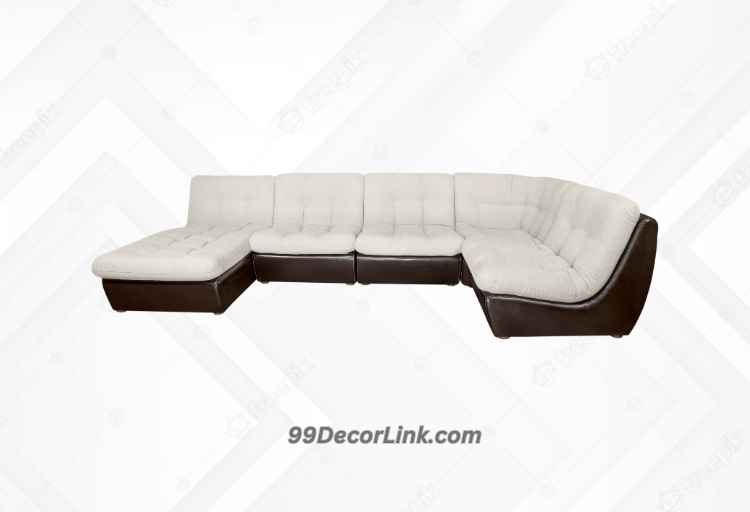5 Steps on How To Disconnect Sectional Furniture
Dismantling a sectional sofa involves more than mere separation; it requires a systematic approach to safeguard both the furniture and the surrounding space. Whether you’re moving, rearranging, or storing the sectional, understanding the intricacies of disconnection is pivotal.
This process necessitates attention to detail, as each piece interlocks to form a cohesive unit. In this guide, we explore the art of disassembling a sectional sofa, providing step-by-step insights to ensure a seamless and damage-free experience.
How To Disconnect Sectional? Firstly, it’s important to assess the current layout of your sofa and determine the desired changes you want to make. Next, remove any cushions or accessories that may be attached. This will make it easier for you to access the connectors.
Once the cushions are removed, locate and disconnect the connectors that hold the sections together. Be gentle when doing this to avoid any damage.
After disconnecting the connectors, gently separate each section from one another. Take care not to force anything apart as this could cause unnecessary damage.
Finally, secure and reassemble the disconnected sections according to your desired layout. By following these steps closely, you’ll be able to effortlessly disconnect your sectional sofa whenever needed.

How To Disconnect Sectional
1. Assess the Current Layout and Desired Changes
Take a moment to evaluate your current sectional layout and consider the changes you want to make. Start by assessing the space availability in your living room or whichever area the sectional is located. Take measurements and note any obstacles or restrictions that may affect the rearrangement process.
Once you have a clear understanding of the available space, identify your desired rearrangement. Do you want to create more seating options? Or maybe you prefer a more open and spacious layout? Consider factors like traffic flow, functionality, and aesthetics when determining how you want to disconnect your sectional.
Keep in mind that disconnecting a sectional may require some heavy lifting or assistance from others, so make sure to plan accordingly and enlist help if needed.
2. Remove any Cushions or Accessories
Remove all cushions or accessories from the sectional to ensure a seamless disassembly process.
- Cushion storage: Tips for safely storing sectional cushions when they’re not in use.
- Cleaning and maintenance: Best practices for cleaning and maintaining sectional cushions and accessories.
Before disconnecting your sectional, it’s essential to remove any cushions or accessories that may be attached. This will make the disassembly process much easier and prevent any damage to these items. Start by carefully lifting each cushion off the sectional, ensuring you have a safe place to store them temporarily.
Consider using cushion storage bags or containers to protect them from dust and dirt while not in use. Additionally, take this opportunity to clean and maintain your cushions and accessories. Follow the manufacturer’s instructions for cleaning materials such as fabric or leather, and consider using protective sprays or treatments to extend their lifespan.
Regularly vacuuming or brushing the cushions will help keep them looking fresh and new. Remember, proper care of these items will contribute to the overall longevity of your sectional furniture.
3. Locate and Disconnect the Connectors
To ensure a smooth disassembly process, it’s important to find and disconnect the connectors that hold the pieces of your sectional together. Troubleshooting common issues with sectional connectors can help you identify any problems before starting the disconnection process.
Some common issues include rusted or stuck connectors, damaged or missing connector parts, or difficulty in locating the connectors. Understanding different types of sectional connectors and their functions is also crucial in this step.
There are various types of connectors such as metal hooks, latches, pins, brackets, or clips. Each type serves a specific purpose in securing the sections together.
Once you have identified the type of connector used in your sectional, carefully detach them by following the manufacturer’s instructions or consulting a professional if needed.
4. Gently Separate the Sections
Carefully and gently separate the sections of your sectional to avoid any damage or mishaps during the disassembly process.
Here are some tips for avoiding damage during the disconnection process:
- Take your time: Rushing through this step can lead to accidental pulling or twisting, which may cause damage.
- Use caution with connectors: Ensure that all connectors are fully disconnected before attempting to separate the sections.
- Support the weight: Have someone assist you in holding up each section while disconnecting it to prevent any sudden drops or falls.
- Label and organize components: To make reassembly easier, label each section and its corresponding components using sticky notes or masking tape.
- Keep hardware together: Place all screws, bolts, and other small hardware in a labeled baggie or container.
5. Secure and Reassemble the Disconnected Sections
After safely separating the sections, you can now securely reassemble them. When it comes to reassembly techniques, there are a few important steps to follow.
First, make sure that all the connectors and joints are aligned properly before attempting to reconnect the sections. This will ensure a secure fit and prevent any wobbling or instability once the sectional is put back together.
Additionally, be mindful of safety precautions during this process. Avoid using excessive force when connecting the sections, as this could damage the frame or cause injury. Take your time and double-check that everything is securely in place before moving on to the next step.
Conclusion
In conclusion, disconnecting a sectional is a fairly simple process that can be done by following a few easy steps. By assessing the current layout and desired changes, removing cushions and accessories, locating and disconnecting the connectors, gently separating the sections, and securing and reassembling the disconnected sections, you can successfully disconnect your sectional.
Remember to take your time and be gentle in order to avoid any damage. With these steps in mind, you’ll have no trouble disconnecting your sectional whenever necessary.

